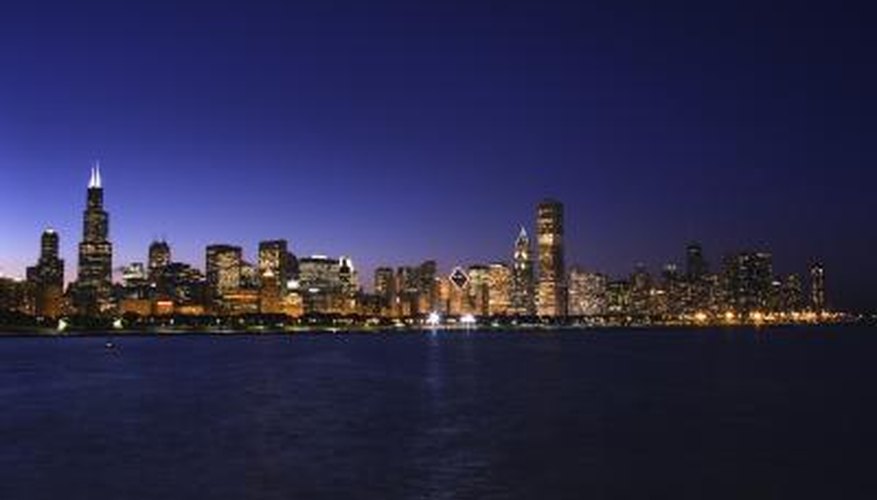Attempting to take night shots with your Nikon D50 camera without the right settings can be frustrating and result in blurry photos. You can adjust this particular camera for lowlight conditions, such as nighttime. Knowing how to change the settings on your Nikon D50 for a night shot will allow you to create beautiful photographs that are not possible with your camera simply set to "Auto Exposure".
- Attempting to take night shots with your Nikon D50 camera without the right settings can be frustrating and result in blurry photos.
Mount your camera on a tripod. Great night shots are the result of longer exposures. The steadiest hands in the world will still result in blurry photos when using slower shutter speeds. Putting your camera on a tripod helps keep your images nice and crisp.
Set the ISO on your camera to 400. This is a good starting point for a night shot and can be adjusted as needed.
Turn the exposure mode dial to "A". This puts your Nikon D50 into aperture priority mode allowing you to take control of the settings for your night shot.
- Set the ISO on your camera to 400.
- This puts your Nikon D50 into aperture priority mode allowing you to take control of the settings for your night shot.
Look through the viewfinder and turn the command dial until you have an f/stop of "16". You can adjust up and down from here as you shoot, but "16" is a good starting point. Your camera will automatically adjust shutter speed for a good exposure.
Press and release the shutter release button to take the photo. The camera shutter may stay open from 1/2-second to ten seconds or longer, so listen and wait for the shutter to close before touching the camera. The slightest movement can cause a blurry photo. A good indication that the shutter has closed is that the image will appear on the LCD.
- Press and release the shutter release button to take the photo.
- A good indication that the shutter has closed is that the image will appear on the LCD.
Review the photo and make adjustments. If the photo is either too dark or light, make an exposure compensation adjustment. Hold down the button next to the shutter release that has the "+/-" on it, and turn the command dial right or left. You will see on the LCD a "+" or "--" followed by a number. A "+" number makes your image brighter, and a "-" number makes your image darker.
TIP
Using the timer or a remote to release the shutter can help minimise vibrations that will cause blurring in night shots Using the mirror lock up function can also help minimise vibrations You may have to switch to manual focus mode as some lenses will have trouble focusing in low light. Adjust your f/stop up and down to see how it affects the final image. If there is a person in your photo, use front curtain flash to freeze them in place in your photo. If they move after the flash you should not see any blurring.
WARNING
Since you are shooting in darkness, be aware of your surroundings. Take care to avoid a tripping accident that could damage your equipment or cause injury to someone.
